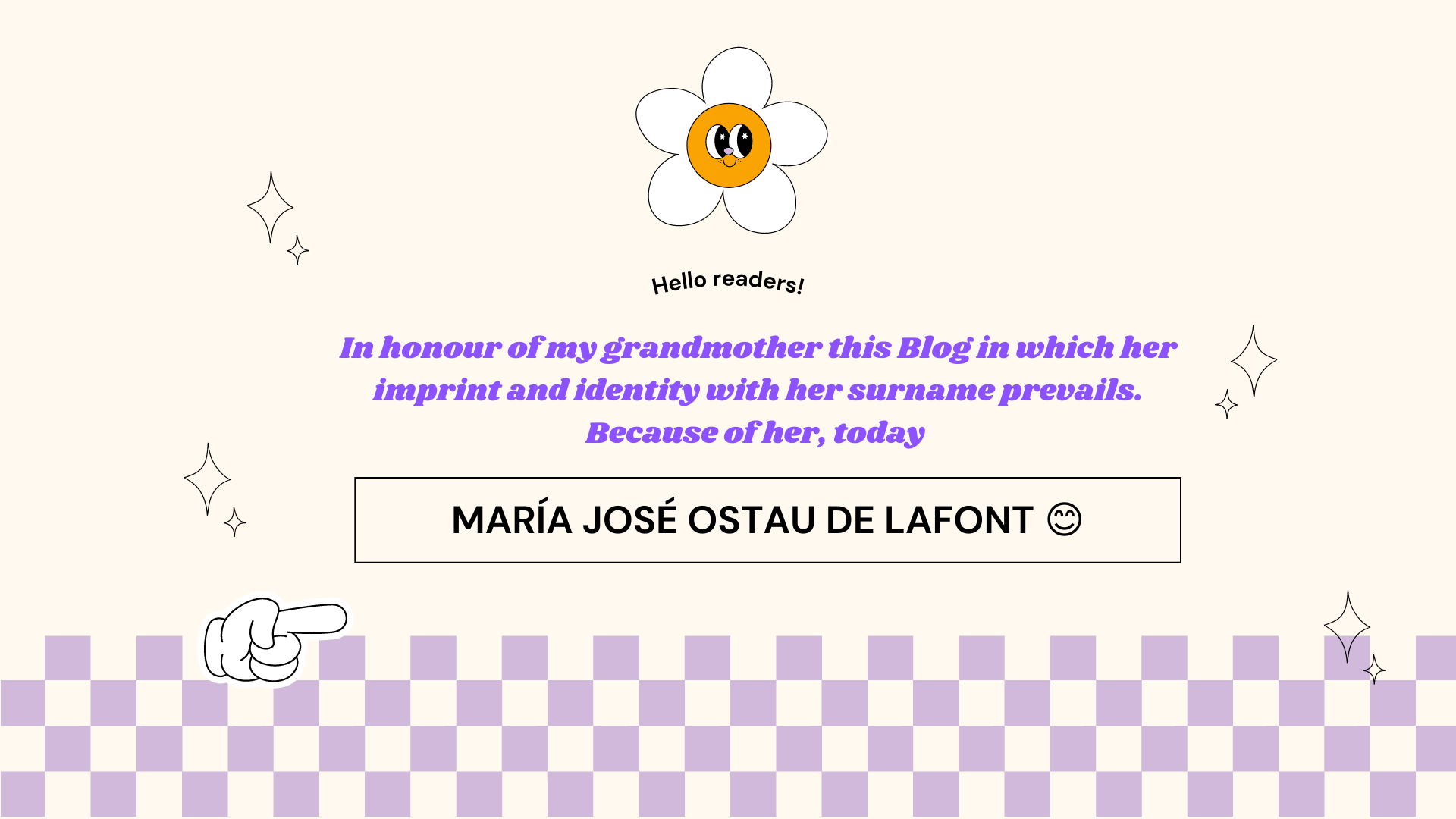
Hello again dear readers, we continue with our purple lines, I want to start this blog with the following question: Did you know that in our country mistakes derived from the patriarchal assumption have been corrected, in particular the possibility of preserving the maternal surname when ordering the safeguard from the gender approach?
If your answer is affirmative, I congratulate you in advance because it means that you are part of the human capital that is attentive to the victorious grounds in favour of equity in our Social State of Law, which allows me to assume with joy that you wear the purple glasses and are exercising your constitutional duty of citizenship by knowing the assertive judicial decisions that concern us all and/or with an erga omnes or majority effect.
In the event that this information is new, or you wish to deepen your knowledge on the subject, this Blog and the digital resources are for you.
In order to ensure a better understanding, we provide the following pathway.
1. The Case: the unconstitutionality lawsuit
The citizen Juan Pablo Pantoja Ruiz requested the declaration of the unconstitutionality of the expression «followed by» in Article 1 of Law 54 of 1989 for violating Articles 13 and 43 of the Political Constitution, as well as Article 2 of the Convention on the Elimination of All Forms of Discrimination against Women (CEDAW).
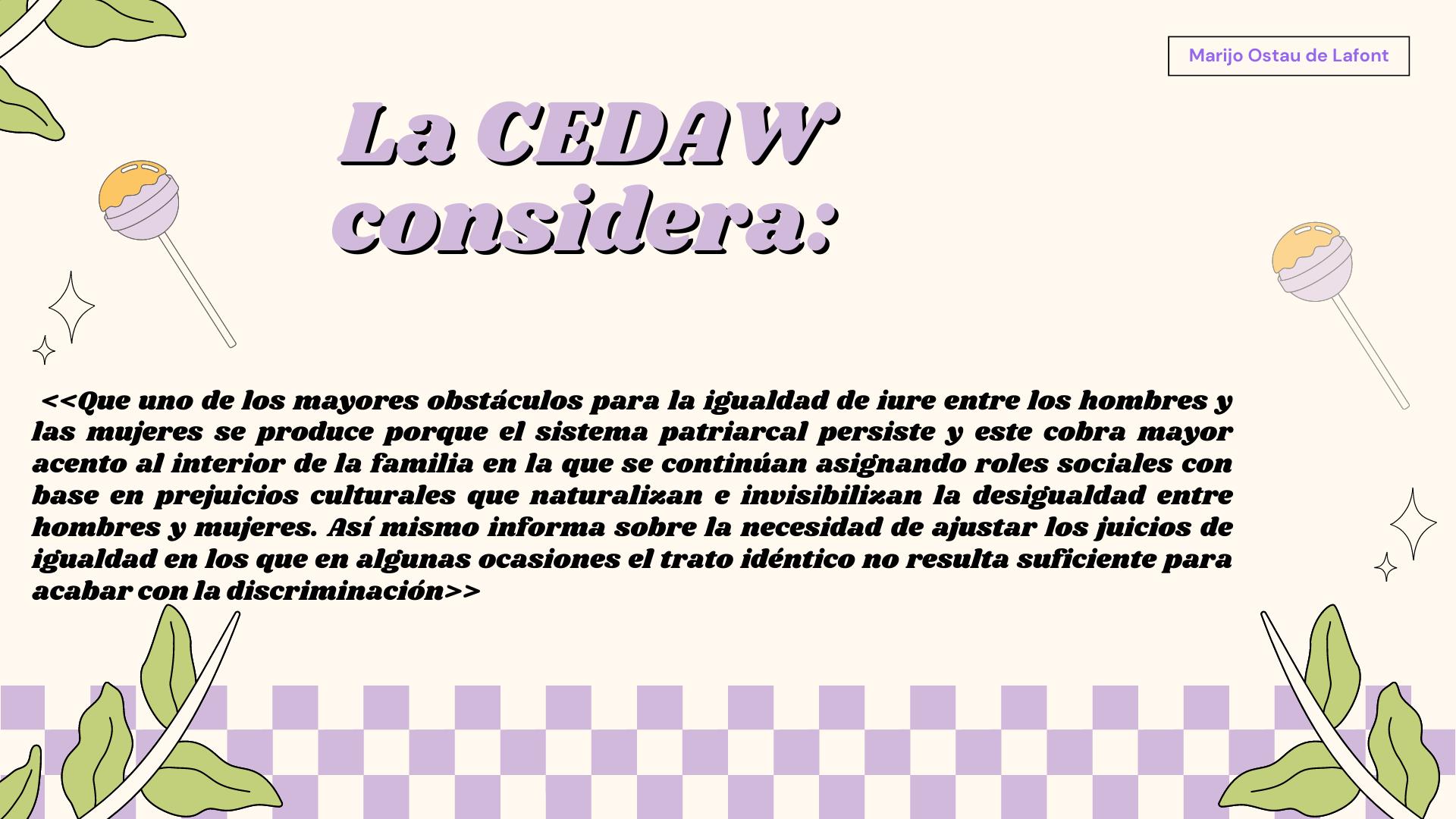
As a subsidiary claim, he requested the Constitutional Court to condition the rule allowing the father and mother to consensually choose the order of the surnames, specifying the procedure to be followed by the officials and until the matter is regulated by the Congress of the Republic.
In his considerations, the citizen also explains the reasons why there is no res judicata even though the provision in question was analysed and declared constitutional by this Corporation in Ruling C-152 of 1994.
In this regard, it is recalled that citizens, in accordance with the provisions of Article 241(4) of the Colombian Constitution, can file unconstitutionality suits against laws, both for their material content and for procedural flaws in their formation, which activates the competence of the Constitutional Court to review and decide whether to declare them executory or non-executory and/or with variants of conditionality.
But, in this case, why did the Constitutional Court consider that there was no Cosa Juzgada Constitucional?
a. Firstly, it was demonstrated that, following the Court’s jurisprudence on the rules of res judicata, in terms of the review of constitutionality, the raising of the legal problem constituted an exception to these rules. This, insofar as the modification of the set of norms used to carry out the review had been demonstrated, and the referents that constitute this modification and the basis and relevance in the new constitutional understanding had been indicated.
It was explained that in Ruling C-152 of 24 March 1994, the norms of the United Nations Convention on the Elimination of All Forms of Discrimination against Women (CEDAW) had not been considered, and that this and the legal and jurisprudential development of more than two decades in matters of gender equality and inclusion in matters of family and identity had brought about a change in the material meaning of the Constitution on this issue. An updated substantive meaning whose disregard would be more serious than the disregard of the formality of res judicata, i.e. that the case had already been resolved.
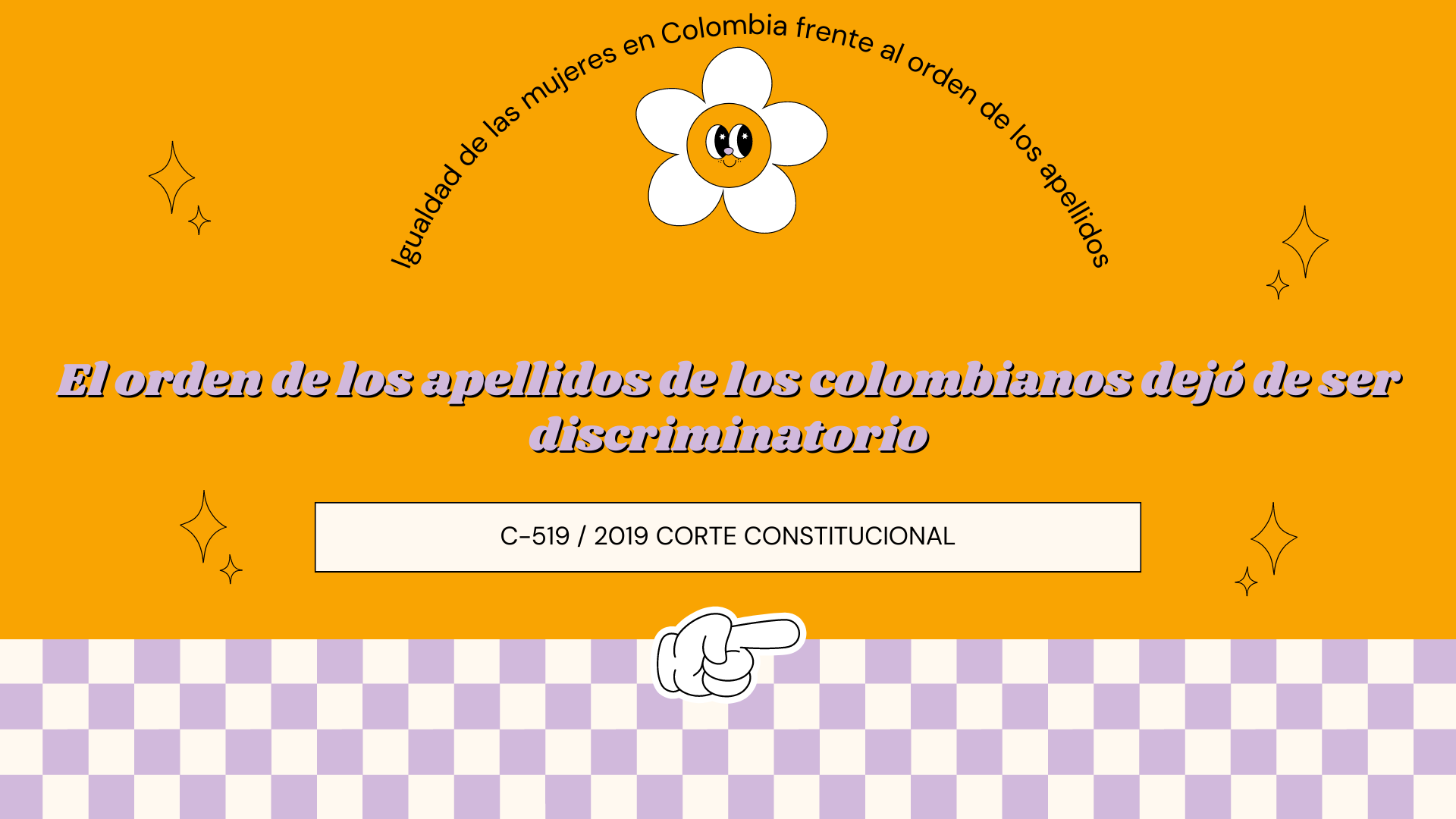
b. Secondly, it was demonstrated that the norm was openly discriminatory, insofar as it violated the basic rule of equality (formal equality), which obliges to treat in the same way «the members of each essential category» as Perelman (1964) maintains, and also the contents of material equality, insofar as the justification for the differential treatment went back and forth between reasons of a religious nature, ancestral traditions, simple customs or social uses, as if this would justify the legal consequences that disadvantaged women in privilege of men.
The Constitutional Court then argued that the prejudice resulting from discrimination was real and not symbolic or apparent (as was maintained in the previous judgement), since it excluded forms of family and identity. Moreover, the precariousness of the justifications that sought to sustain the discrimination can be interpreted rather in terms of the paternal surname going first, because it is that of the man, and the maternal surname second, because it is that of the woman. Such a criterion does not withstand an analysis of equality, or critical comparison or weighting, as indeed was demonstrated in judgment C-519 of 2019.
2. What did the Constitutional Court decide?
The Constitutional Court excluded the norm from the Colombian legal system, with deferred effect in time, urging the Congress of the Republic to make the relevant regulatory amendment in accordance with constitutional principles.
The decision warned that if the legislator did not do so within two legislatures following the notification of the judgement (a period of approximately two years), the rule would remain in force, and would remain so until the expiry of that period, in terms that the parents by common agreement can decide the order of the children’s surnames.
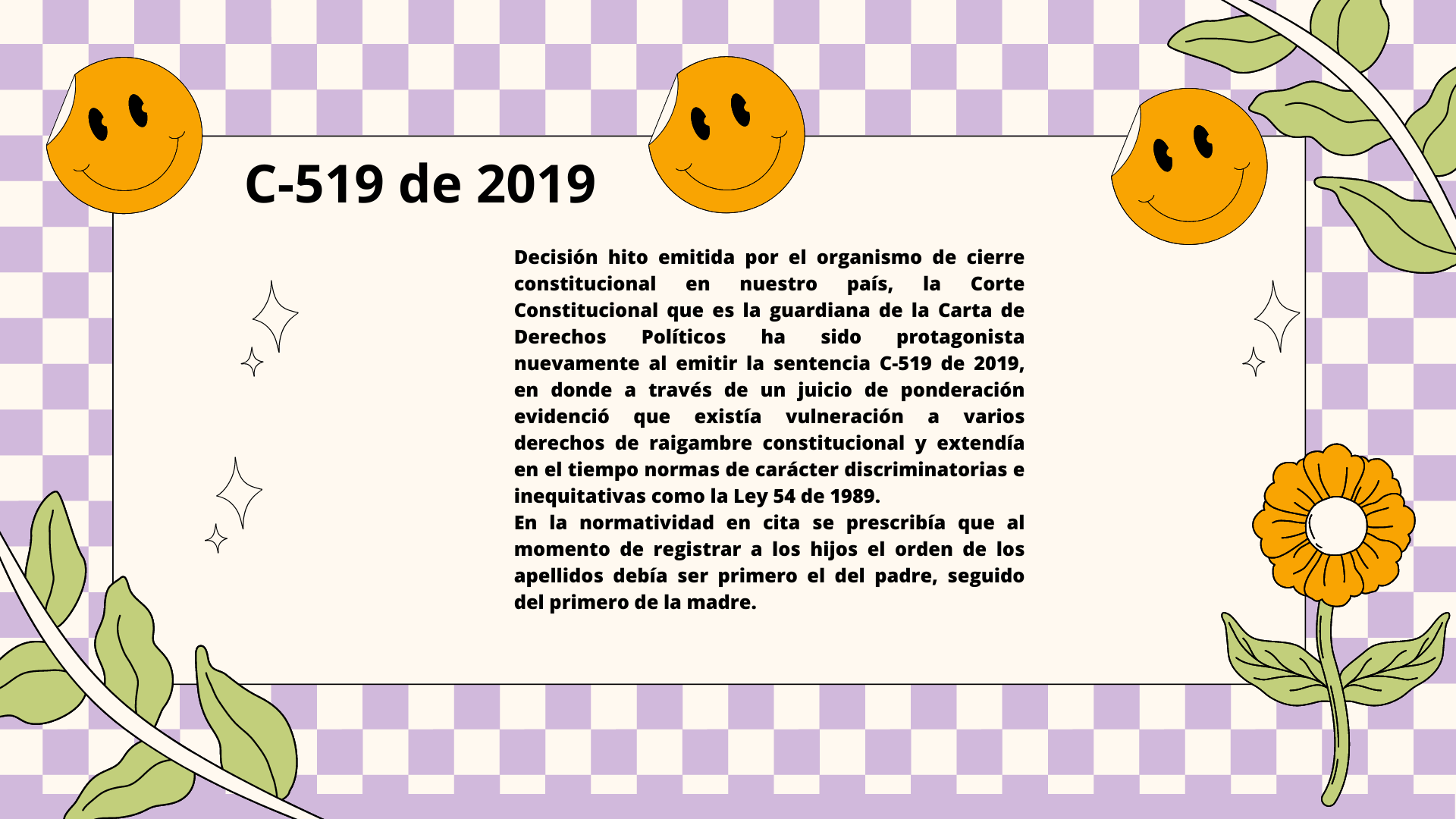
Fortunately for Colombians since 2021, the legislature in a diligent action complied with the order issued by the Constitutional Court by issuing the Aluna Law or 2129 of 2021.
We invite you to review in the following QR code the sentence in its entirety.


3. The Aluna Law or 2129 of 2021
I would like to start with the reason for the name of the Law, which underlies the mythical account of creation according to the Kogui cosmovision. Thus, Herrera (2017) argues that Aluna is inscribed in the everyday life of the community where the world has its beginnings in the same sea that surrounds the territory. The myth emerges from the sea, just as the Sierra Nevada de Santa Marta begins at the edge of the beach and the mamas tell us that, before germinating, life requires darkness; in the same way that the Kogui tradition proposes to them, in their work as guides of the community, to remain in the absence of light for several days as part of the training in their connection with the spiritual. Night is the time to return to the origin, to establish communication with Aluna and to be closer to the mother. At dawn, after the myth has been told, the world will have surfaced (p.2).
Thus, the nomination of the law has a strong connection with Aluna the mother, and we will now share the origin of the law in its entirety from the assumption of life for the Kogui:
“La creación
Primero estaba el mar. Todo estaba oscuro.
No había sol, ni luna, ni gente, ni animales, ni plantas.
Solo el mar estaba en todas partes.
El mar era la Madre.
Ella era agua y agua por todas partes
y ella era río, laguna, quebrada y mar
y así ella estaba en todas partes.
Así, primero, solo estaba la Madre.
Se llamaba Geaulchovang.
La Madre no era gente,
ni nada, ni cosa alguna.
Ella era Aluna.
Ella era espíritu de lo que iba a venir
y ella era pensamiento y memoria.
Así la Madre existió solo en Aluna
en el mundo más abajo,
en la profundidad
sola.
Entonces cuando existió así la Madre,
Se formaron arriba las tierras, los mundos, hasta donde
está hoy nuestro mundo.
Eran nueve mundos y se formaron así:
primero estaba la Madre y el agua y la noche.
No había amanecido aún.
También existía un padre que se llamaba Kata Ke-ne-ne-Nuláng.
Ellos tenían un hijo que se llamaba Bunkua-sé.
Pero ellos no eran gente, ni nada, ni cosa alguna.
Ellos eran Aluna. Eran espíritu y pensamiento.
Eso fue el primer mundo, el primero puesto y el primer instante.
Entonces se formó otro mundo más arriba, el segundo mundo.
Entonces existía un Padre que era un tigre.
Pero no era tigre como animal, sino era tigre en Aluna.
Entonces se formó otro mundo más arriba, el tercer mundo.
Ya empezó a haber gente. Pero no tenían huesos ni fuerza.
Eran como gusanos y lombrices.
Nacieron de la Madre.
Entonces se formó el cuarto mundo.
Su madre se llamaba Sáyaganeye-yumáng.
Y había otra Madre que se llamaba Disi-se-yuntaná
y un Padre que se llamaba Sai-taná.
Este Padre fue el primero que sabía ya cómo iba a ser la gente de nuestro
mundo.
Y fue el primero que sabía que iban a tener cuerpo, piernas, brazos
y cabezas.
Entonces se formó otro mundo y en este mundo estaba la madre
Enkuane-ne-nuláng.
Entonces no había casas todavía, pero ahora se formó la primera casa,
no con palos ni bejuco ni paja, sino en aluna, en el espíritu, no más.
Entonces ya existían Kashindúkua, Noana-se y Nánacu.
Entonces ya había gente, pero aún les faltaban las orejas, los ojos y las
narices.
Solo tenían pies.
Entonces la Madre mandó que hablaran.
Fue la primera vez que gente habló,
pero como no tenían lenguaje todavía, iban y decían:
Sai-sai-sai (“noche-noche-noche”),
ya había cinco mundos.
Entonces se formó el sexto mundo.
Su Madre era Bunkuáne-ne-nuláng; su Padre era Saichaká.
Ellos ya iban formando un cuerpo entero con brazos, pies y cabeza.
Entonces empezaron a nacer los Dueños del Mundo.
Eran primero dos: el Bunkua-se azul y el Bunkua-se negro.
Se dividió el mundo en dos partes en dos lados:
el Azul y el Negro,
y en cada uno había nueve Bankua-se.
Los del Lado Izquierdo eran todos Azules.
Los del Lado Derecho eran todos Negros.
Entonces se formó el séptimo mundo y su madre era Ahunyika.
Entonces el cuerpo aún no tenía sangre,
pero ahora comenzaba a formarse sangre.
Entonces se formó el octavo mundo y su Madre se llamaba Kenyajé.
Su Padre era Ahuina-Katana.
Pero cuando se formó este mundo,
lo que iba a vivir luego,
no estaba aún
completo. Pero ya casi.
Entonces había aún agua en todas partes.
Aún no había amanecido.
Entonces se formó el noveno mundo.
Pero no había tierra aún.
Aún no había amanecido.” (p. 538)
This beautiful myth is part of the compilation of texts found in the first volume of the book Antes el amanecer. Antología de las literaturas indígenas de los Andes y la Sierra Nevada de Santa Marta (Rocha, 2010), which is part of a project of the Ministry of Culture called Biblioteca Básica de los Pueblos Indígenas de Colombia. Nation from the roots. The purpose of this project is to select and compile oral tradition, literature, and historical documents of the country’s ancestral peoples into a collection of texts. The myth has been taken for the compendium from the book Los kogi, una tribu de la Sierra Nevada de Santa Marta (1985) by the anthropologist Gerardo Reichel-Dolmatoff (Herrera, 2017 p. 3 to 5).
I confess that I love the reference to the Kogui cosmovision for the name of the Law, although there are those who also claim that it has been given that name by the daughter of the rapporteur of the bill, Representative María José Pizarro, however, the paradoxical thing in this matter is that it has been imbricated with the mythological conception of the indigenous populations and those with a matrilineal tradition have been excluded from the legal norm, as we will discuss in the last point.
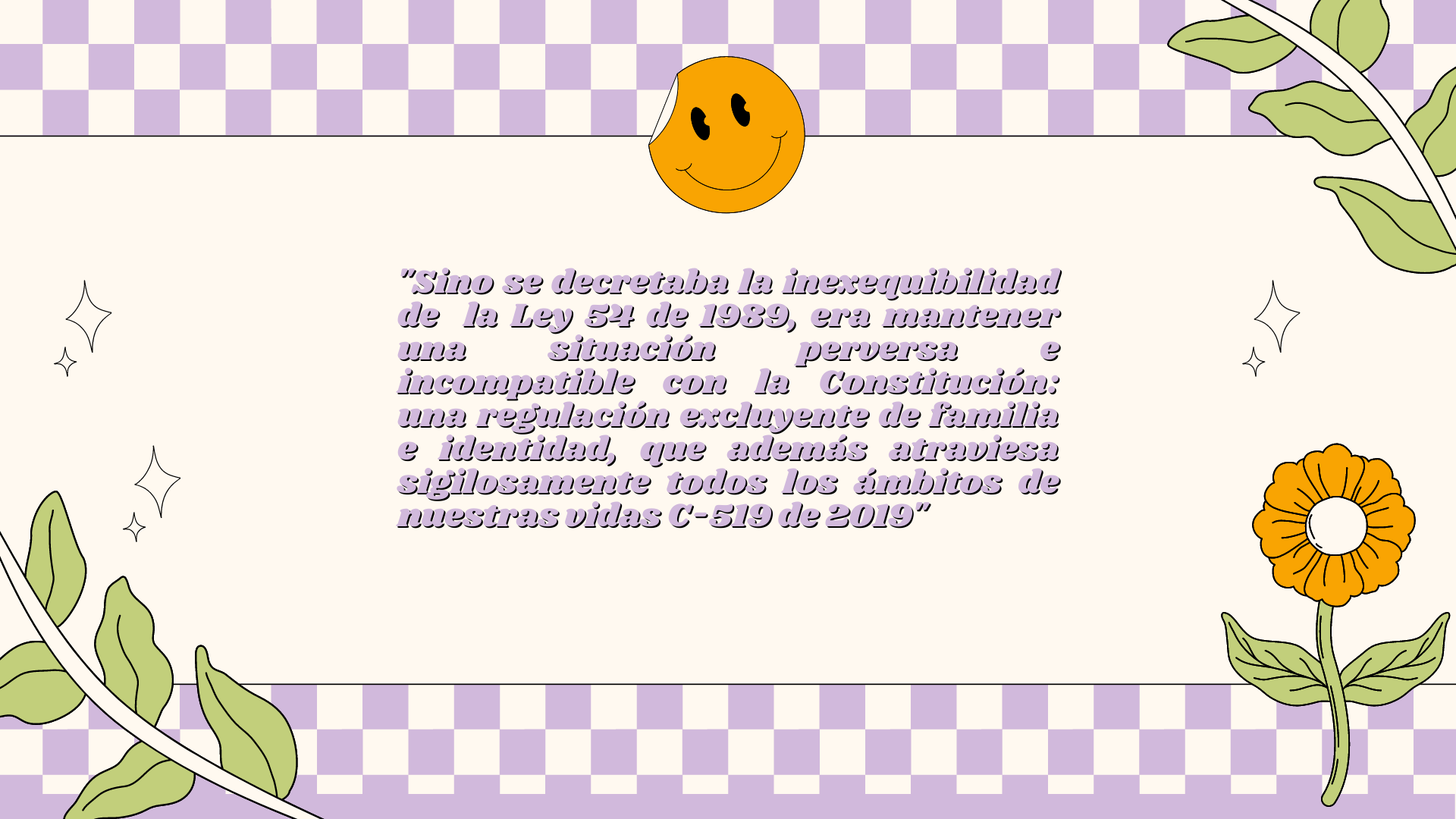
As for the content of Law 2129 of 2021, which repealed Law 54 of 1989 and modified Decree 1260 of 1970, it establishes new parameters for establishing the order in which the surnames of children should be registered in the Civil Registry of Birth. Thus, according to the new legislation:
-Parents may decide by mutual agreement on the order of their children’s surnames; it is no longer compulsory for the first name to be that of the father, as was previously the case.
-If it is not possible to reach a consensus, the official in charge of the register will resolve the disagreement by drawing lots, in accordance with the procedure to be established.
-In the absence of agreement for children whose paternity or maternity has been judicially declared, the surname of the father who first recognised the child shall be registered, followed by the one who has won the proceedings.
-In the absence of recognition as a child of one of the parents, the surname of the father who makes the entry in the Civil Register of Birth shall be assigned.
-Those who are registered with only one surname may add the second surname through the procedure established in Decree 999 of 1988.
With the issuance of this Law, Colombia continues to contribute from a practical materialisation of its commitment to the fulfilment of the SDGs, especially number 5, gender equality, with the understanding that both the judicial and legislative bodies are contributing from their competences to the reduction of gender gaps in the country.
However, legislation requires the involvement of other state agencies, the most suitable in this case being the National Civil Registry, which should design the procedure for drawing lots if the parents are unable to agree on the order of surnames.
This last possibility, the «raffle and/or lottery», was the breaking point that caused unease among indigenous peoples whose filiation or kinship system is governed by matrilineage.

4. The resistance of the Wayuu to the Aluna law
The fact that the constitutional order will be implemented in our country and that the legislature will promptly comply with it is an achievement in terms of efficiency, but even more so in terms of its content, which reaffirms concrete actions for the path of gender equality. This is a gain!
However, this does not mean that the legislation has fulfilled its mission in full or in its entirety, since there was reproach from the Wayuu community, who considered that the initiative did not consider the matrilineal traditions of their ethnic group, who put the mothers’ surnames first when naming their children.
The disagreement lies specifically in the regulation of the lottery for the assignment of the surname, which in their opinion would have been solved with the addition of a paragraph that would exempt indigenous peoples whose filiation or kinship system is governed by matrilineage, since it contravenes the provisions of Article 7 of the Political Constitution of Colombia when it states: «The State recognizes and protects the ethnic and cultural diversity of the Colombian Nation».
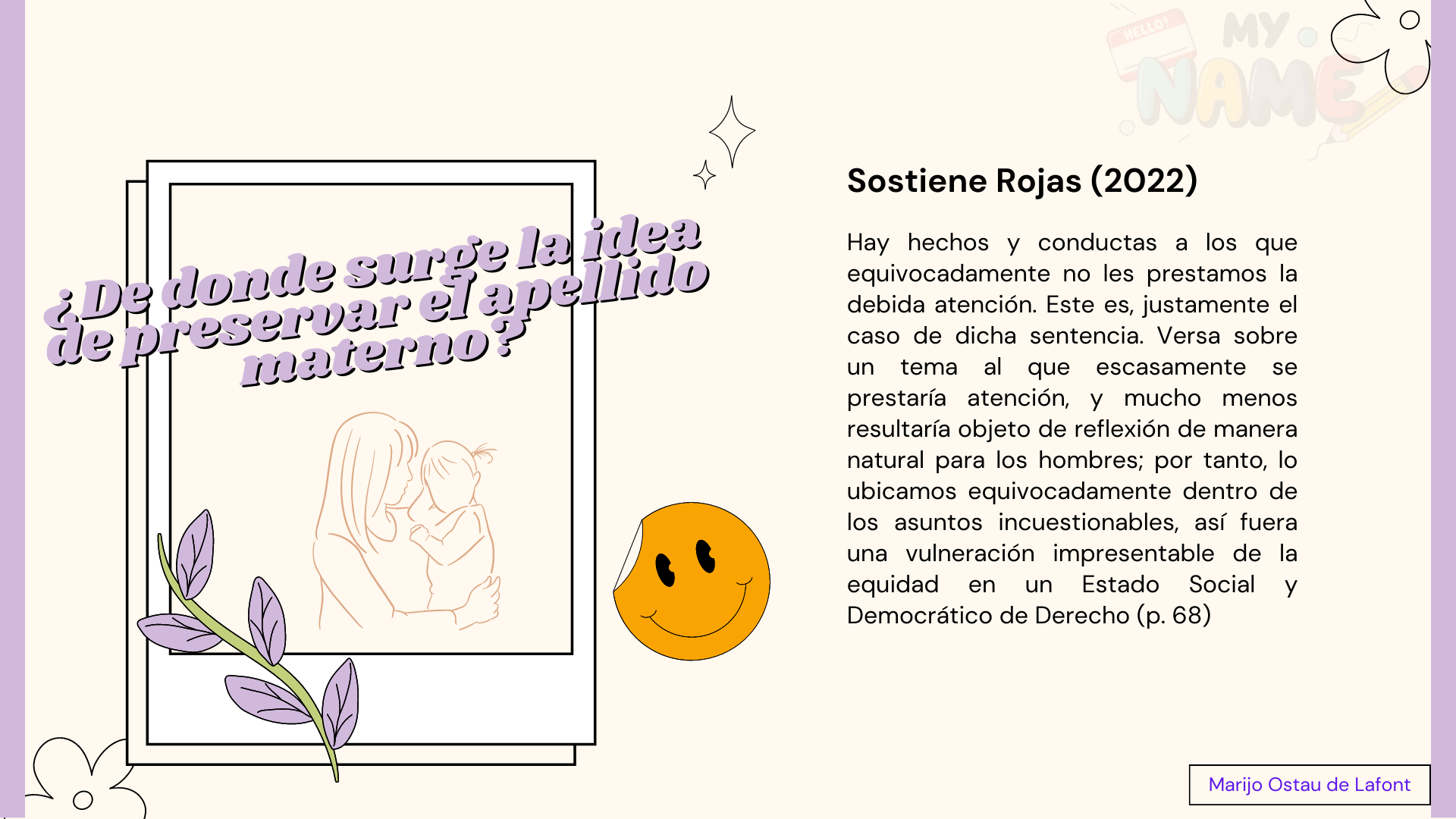
Taking into account the above, it should be noted that, in our country, the Wayuu women’s collectives since the 1990s have supported movements for the respect and recognition of their ethnic and cultural diversity, which led in advance to the issuance of administrative instruction number 3 of 1995, issued by the Superintendence of Notaries and Registry, which has allowed Wayuu women to register their children with their mother’s surname, as enshrined in the aforementioned instruction, which is presented in its literal wording below:
«If the matrilineal line prevails in some indigenous communities, the mother’s surname will be entered as the first surname, and only if the indigenous cultural tradition allows it, the paternal surname will be entered subsequently».
In turn, and along the same lines, Circular 276 of 2014 issued by the National Civil Registry issued guidelines for the initial registration, as well as for the modification and/or replacement of the civil registry of births of members of indigenous communities and/or peoples, addressed to the officials in charge of the registry, among others.
However, with the issuance of the Aluna Law (2129 of 2021), indigenous peoples with a matrilineal system were excluded despite the name, which was perceived as a bittersweet achievement.
So, what can the Wayuu do?
In accordance with the above, there are several possibilities for amendment that could be considered, the first to correct the shortcoming is to present a bill in which the ethnic and cultural diversity that constitutes the subjective element of our State is assumed in a co-responsible manner.
As a second alternative, an action for unconstitutionality could be brought, based on the violation of Article 7 of the Constitution, although finally, in the framework of Article 4 of the Political Constitution of Colombia, it would also be considered appropriate to make use of the exception of constitutionality.
As can be seen, there are alternatives, although all this return to the beginning could have been avoided if we always kept in mind the cultural diversity of which we are a part. Thus, the goodness of Aluna is highlighted, and we will be attentive to the solution that will be provided to the matrilineal indigenous populations.
This concludes our purple lines for today, if you want to propose a theme for this series let me know in the comments box.
In the next installment: Menstrual Dignity, the guardianship that changed a reality.
Thanks for reading

References
- Constitución Política de Colombia
- C-152 de 1994 Corte Constitucional Colombiana
- C-519 de 2019 Corte Constitucional Colombiana
- Herrera, G. (2017) Perspectiva literaria e identidad narrativa en un mito indígena Kogui por la madre. https://repository.eafit.edu.co/bitstream/handle/10784/12348/JoseGregorio_HerreraZapata_2017.pdf?sequence=2&isAllowed=y
- Perelman, C. (1964) De la Justicia. México: Centro de Estudios Filosóficos de la Universidad Autónoma de México.
- Rocha, M. (2010). Antes el amanecer. Antología de las literaturas indígenas de los Andes y la Sierra Nevada de Santa Marta. Bogotá: Ministerio de Cultura.
- Rojas, A. (2022) El poder de las minorías en la Corte Constitucional. Editorial Planeta.
- «El orden de los apellidos de los colombianos dejó de ser discriminatorio. C-519 de 2019»



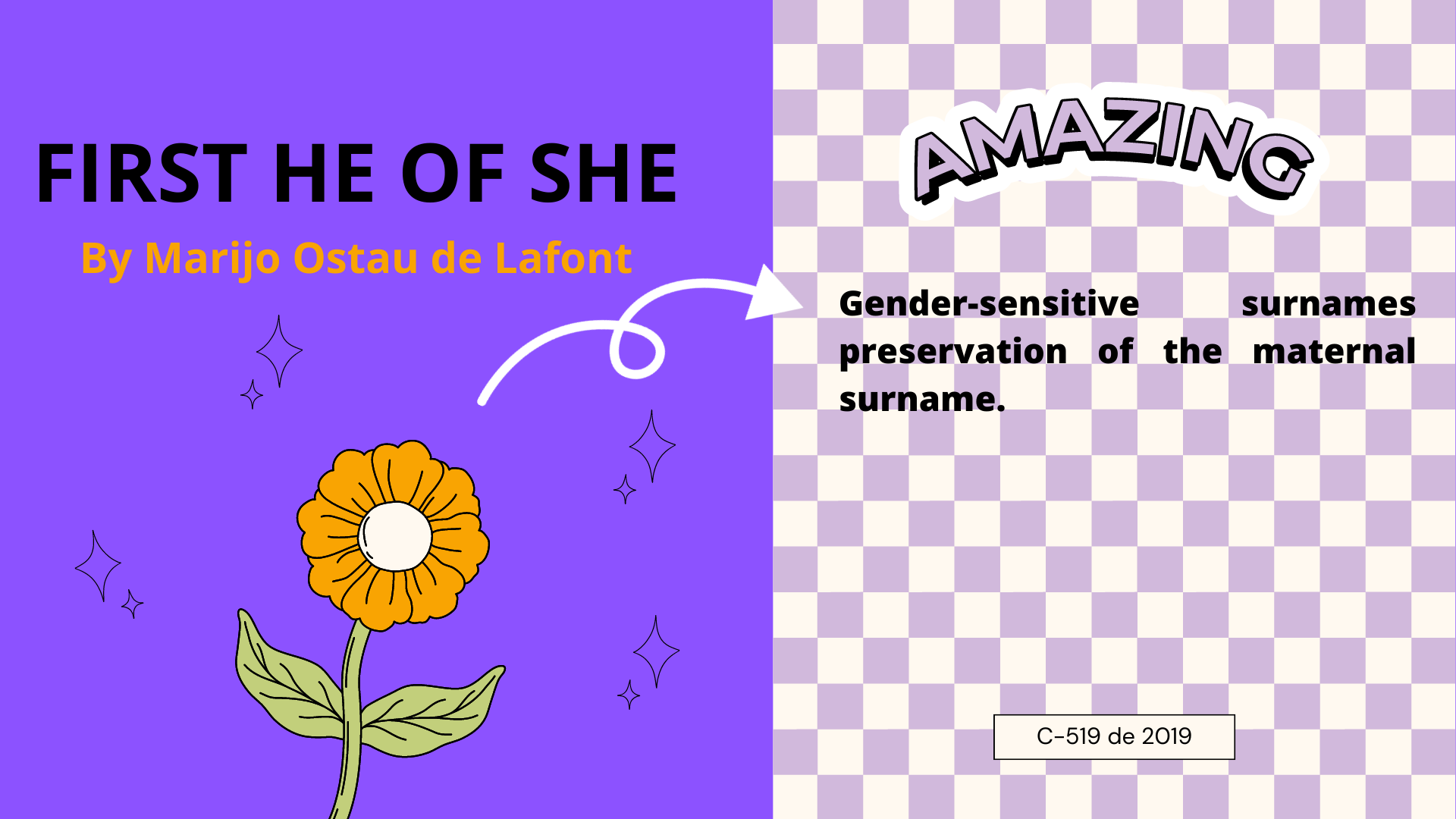

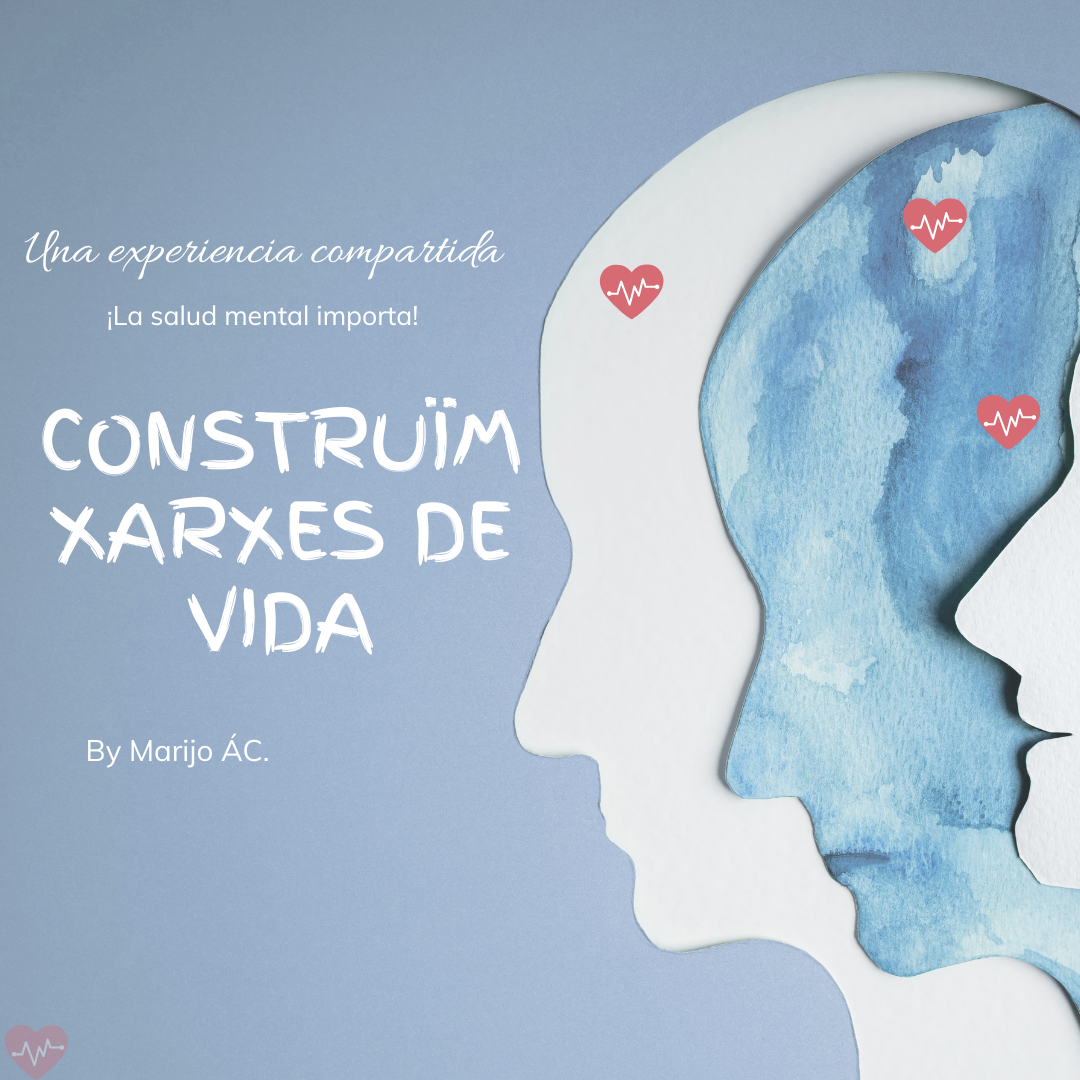
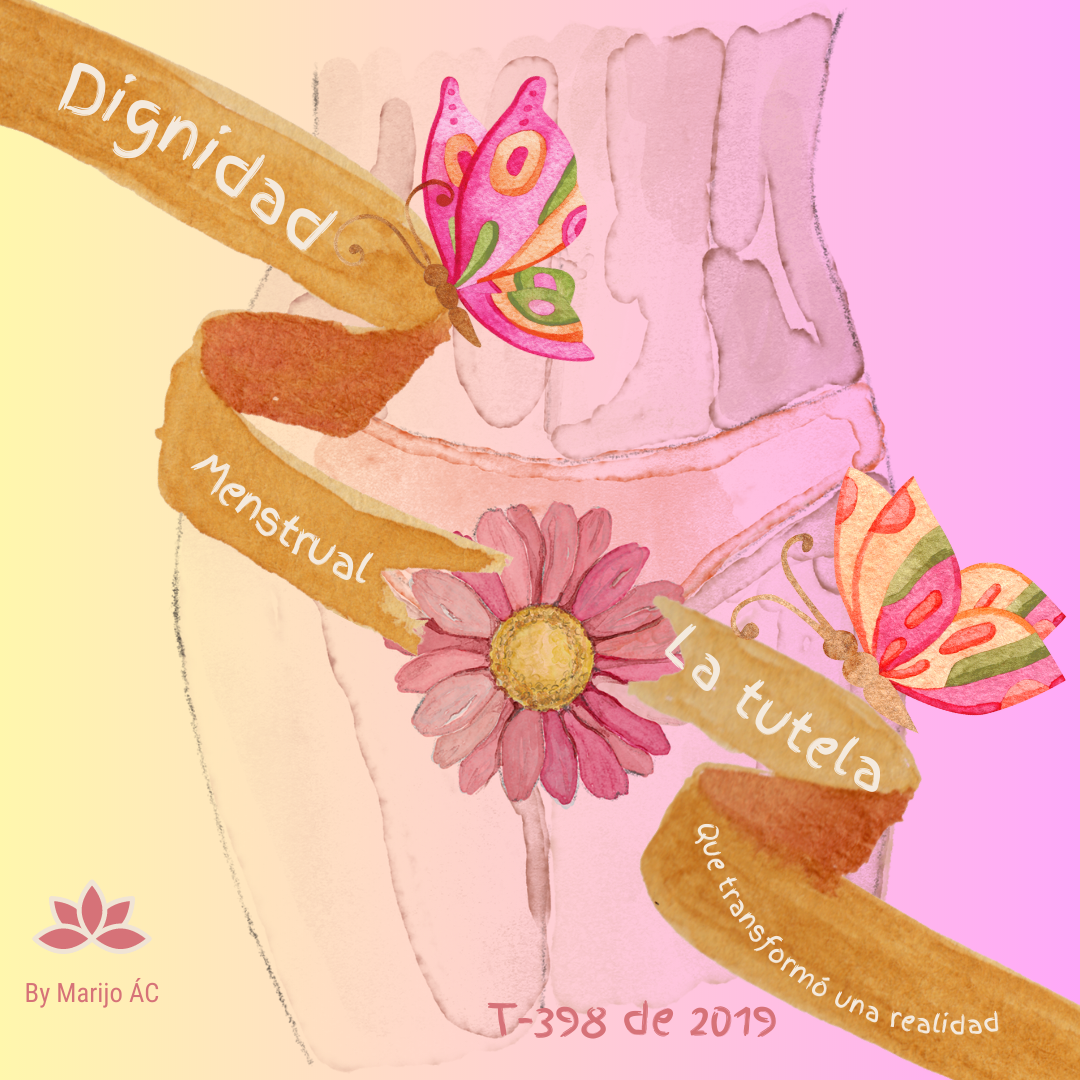



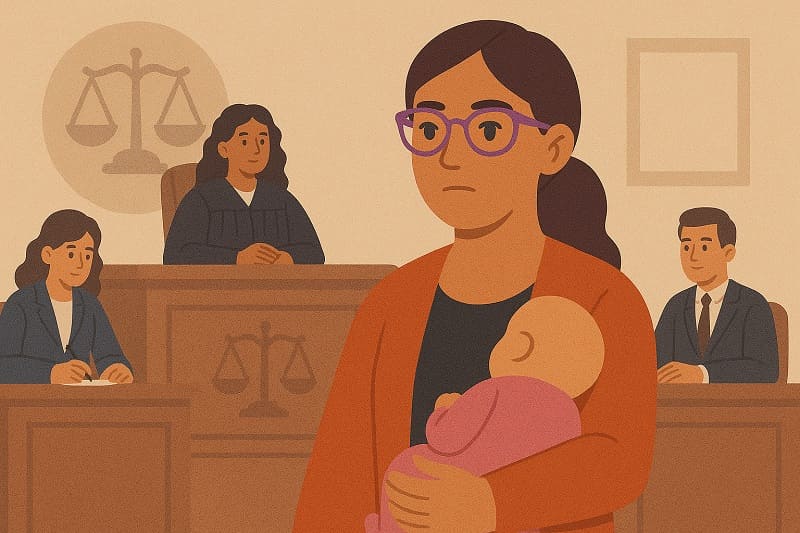
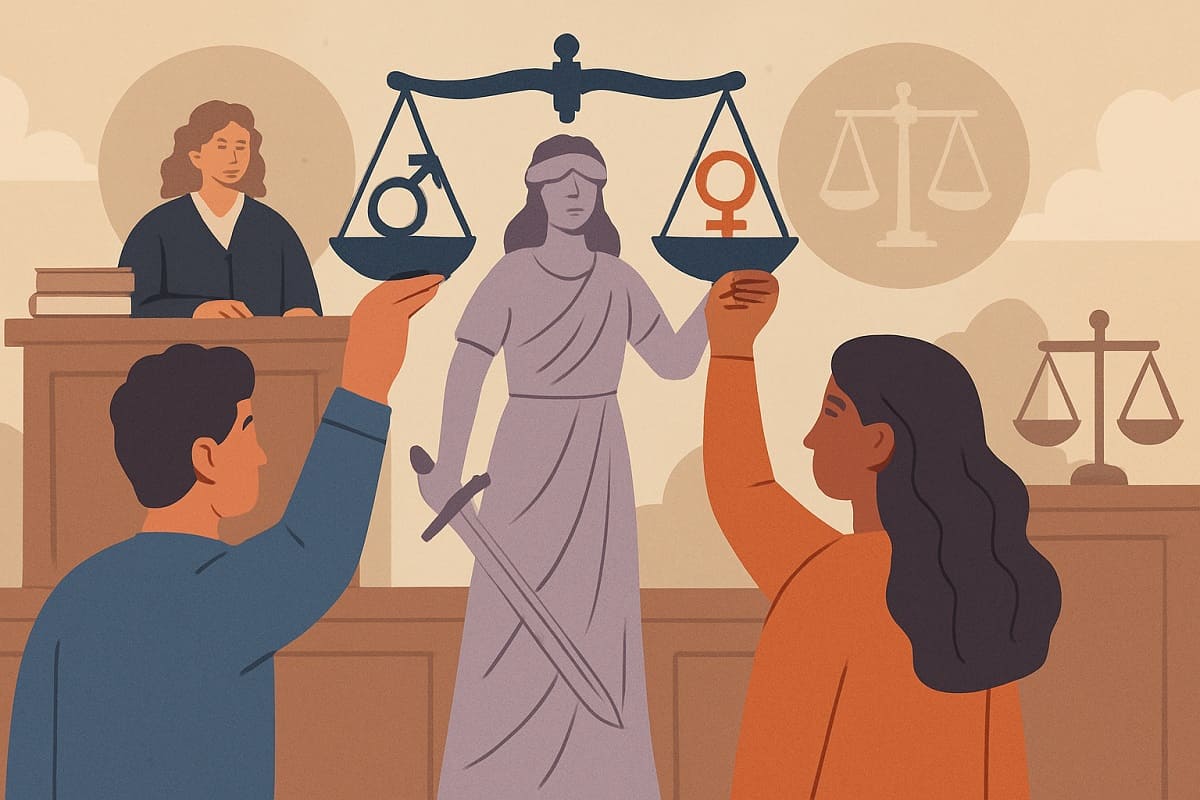
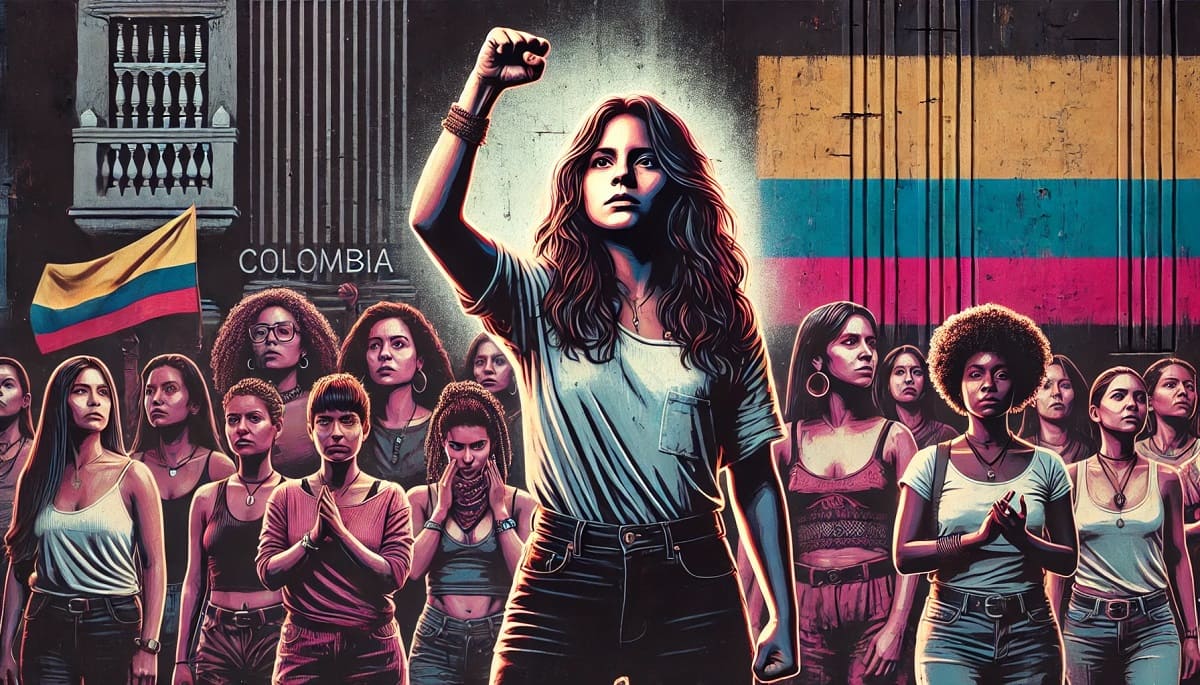
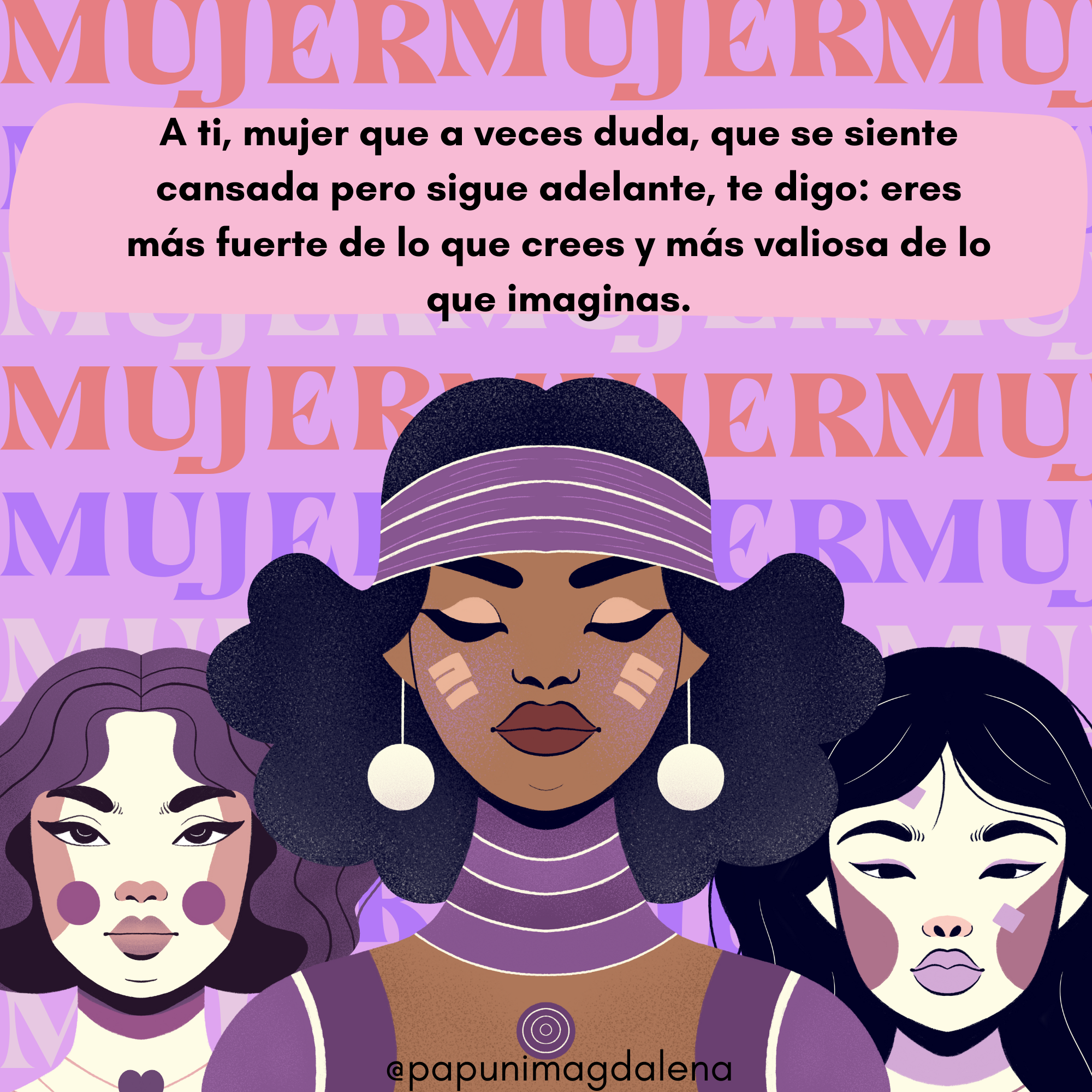

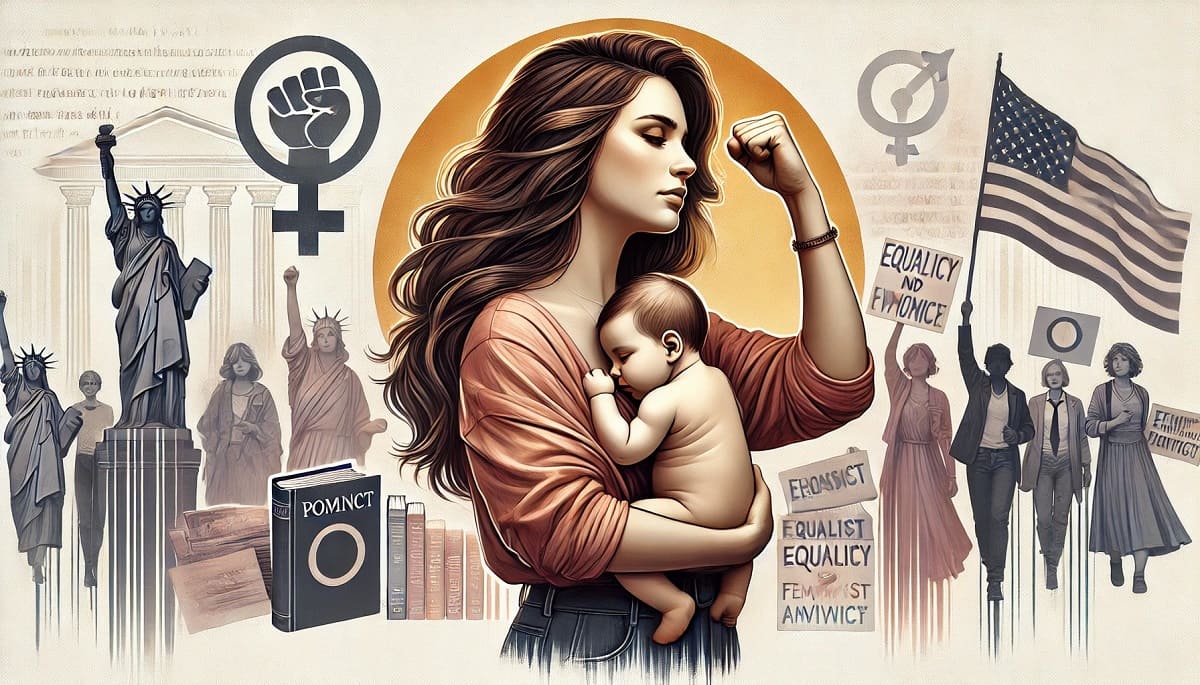










Comentarios